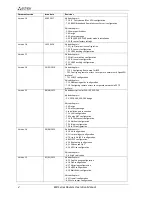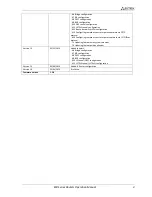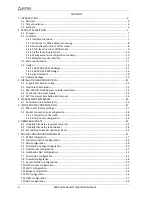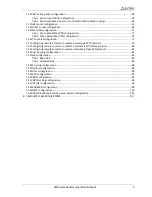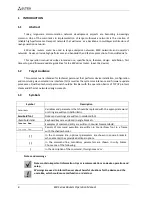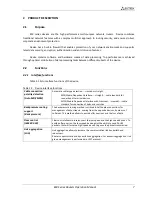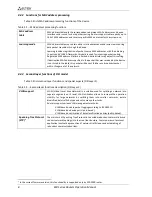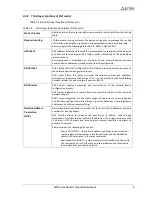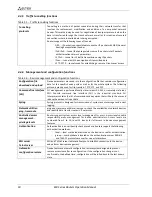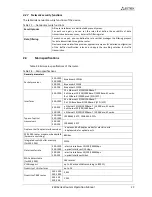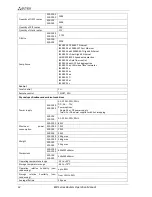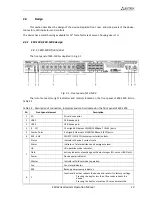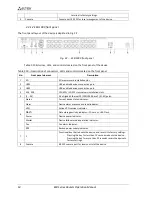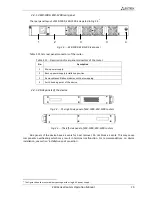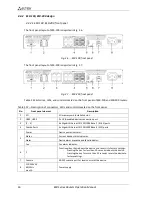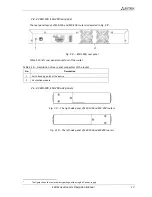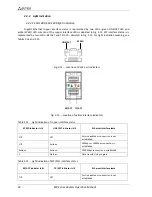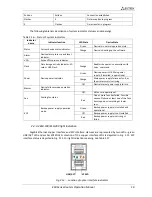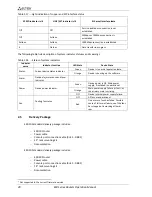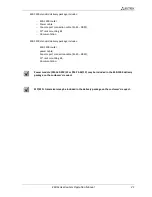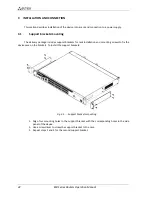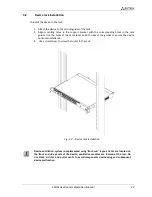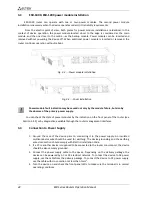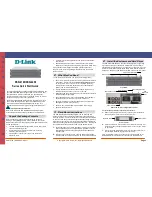
ESR Series Routers Operation Manual
9
2.2.4
Third-layer functions of OSI model
Table 2.4 lists third-layer functions (OSI Layer 3).
Table 2.4
—
Third-layer functions description (OSI Layer 3)
Static IP routes
Administrator of the router can add or remove static records into/from the routing
table.
Dynamic routing
With dynamic routing protocols, the device will be able to exchange the routing
information with neighbouring routers and automatically create a routing table.
Router supports the following protocols: RIP, OSPFv2, OSPFv3, BGP.
ARP table
ARP (Address Resolution Protocol) is a protocol used for resolution of the network
and data-link layer addresses. ARP table contains information on the established
correspondence.
Correspondence is established on the basis of the network device response
analysis; device addresses are requested with broadcast packets.
DHCP client
DHCP (
Dynamic Host Configuration Protocol
) protocol enables automation of
the network device management process.
DHCP client allows the router to obtain the network address and additional
settings from the external DHCP server. As a rule, this method is used for obtaining
network settings of a public network operator (WAN).
DHCP server
DHCP server enables automation and centralization of the network device
configuration process.
DHCP server allocated on a router allows for a complete solution for the local area
network support.
DHCP server integrated into the router assigns IP addresses to network devices
and transfers additional network settings, e.g. server addresses, network gateway
addresses and other necessary settings.
Network Address
Translation
(NAT)
Network address translation is a mechanism that translates IP addresses and port
numbers for transit packets.
NAT function allows to minimize the quantity of IP address used through
translation of multiple internal network IP addresses into a single external public
IP address. NAT conceals local area network internal structure and allows to
enhance its security.
Routers support the following NAT options:
–
Source NAT (SNAT)
—
the network address and the source port number
will be replaced, when packet is transferred forth, and the destination
address will be replaced in the response packet.
–
Destination NAT (DNAT)
—
external access is translated by the firewall to
the user computer in LAN that has an internal address and thus directly
inaccessible from outside the network.


